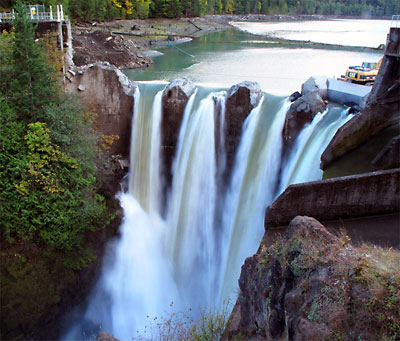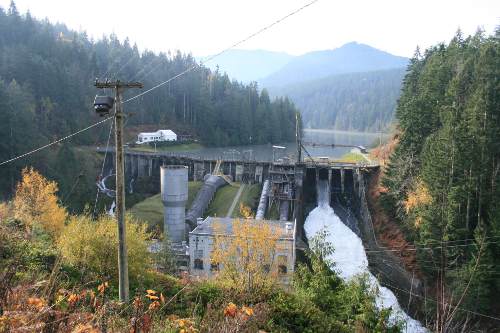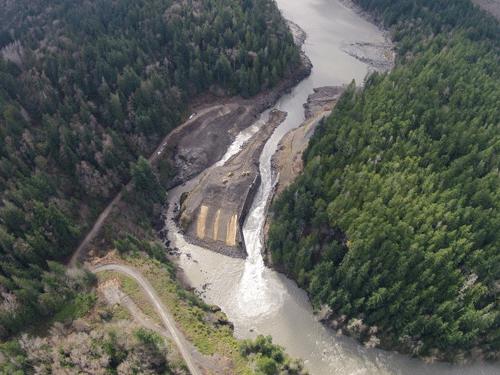
Removal of Glines Canyon Dam on Washington's Elhwa River.
(Photo: National Park Service)
Autumn has been an incredibly exciting time at American Rivers, as it marks the one-year anniversary of the world’s largest dam removal project.
Because of efforts like the historic river restoration initiative in Washington state—which included removal of the Glines Canyon Dam and the Elwha Dam on the Elwha River beginning last September, and the Condit Dam on the White Salmon River which began last October—American Rivers dubbed 2011 “The Year of the River.”
The removal of these dams is creating a healthier natural environment and providing miles of reopened habitat for spawning salmon and steelhead. The freed rivers are also producing significant new recreational opportunities and economic benefits for communities.
Dams are harmful because they block the flow of rivers, prevent migrating fish from swimming upstream, and create reservoirs that drown rapids and riverside habitat. (Read "10 Ways Dams Damage Rivers")

The Elwha Dam on Washington's Elhwa River, before breaching.
(Photo: National Park Service)
American Rivers is the leading organization working to protect and restore the rivers and streams of the United States, and last year we reached the milestone of 1,000 dams removed in the country. Of these, the Glines Canyon Dam on the Elwha River, which stood at 210 feet, is the tallest to ever be dismantled.
With the Glines Canyon and Elwha dams both being removed, the Elwha River can flow freely for the first time in 100 years, restoring over 70 miles of salmon and steelhead habitat. The newly reopened waters of the Elwha will provide new stretches for paddlers to explore, more fish for anglers to pursue, and more pristine natural beauty in Olympic National Park for hikers and nature lovers to behold.
The removal of the 95-year old, 125-foot Condit Dam from the White Salmon River has also led to a number of great opportunities for outdoorsmen and women.

The Elwha Dam, post breaching. (Photo: National Park Service)
For decades, American Rivers has been working with its partners, including the Yakama Indian Nation, to remove the dam. And now that this goal has been accomplished it has restored access to 33 miles of habitat for steelhead and 14 miles of habitat for chinook salmon. This will provide fishermen with many new destinations to cast their lines.
The White Salmon River is also nationally recognized as a premier whitewater destination, with 10 outfitters running commercial trips on the river and 40,000 boaters using the waterway each year. The dam removal will open up an additional five miles for rafters and kayakers to enjoy.
Though the one-year anniversary of the removal of the Glines Canyon, Elwha, and Condit dams is exciting, it is truly only the beginning. The coming years will bring with them more spawning salmon, a revitalized ecosystem, and an even greater number of recreational activities to enjoy in the area.
In the meantime, we’ll keep doing our part at American Rivers to pursue river protection and restoration all across America. Be sure to follow our progress and sign up for updates at www.americanrivers.org.
About American Rivers
Johannes Dreisbach is an intern with American Rivers, the leading organization working to protect and restore the nation’s rivers and streams. Since 1973, American Rivers has fought to help protect and restore more than 150,000 miles of rivers through advocacy efforts, on-the-ground projects, and the annual release of America’s Most Endangered Rivers. It's also one of the outdoor and environmental nonprofits that Trailspace supports.
Learn more at www.americanrivers.org.










